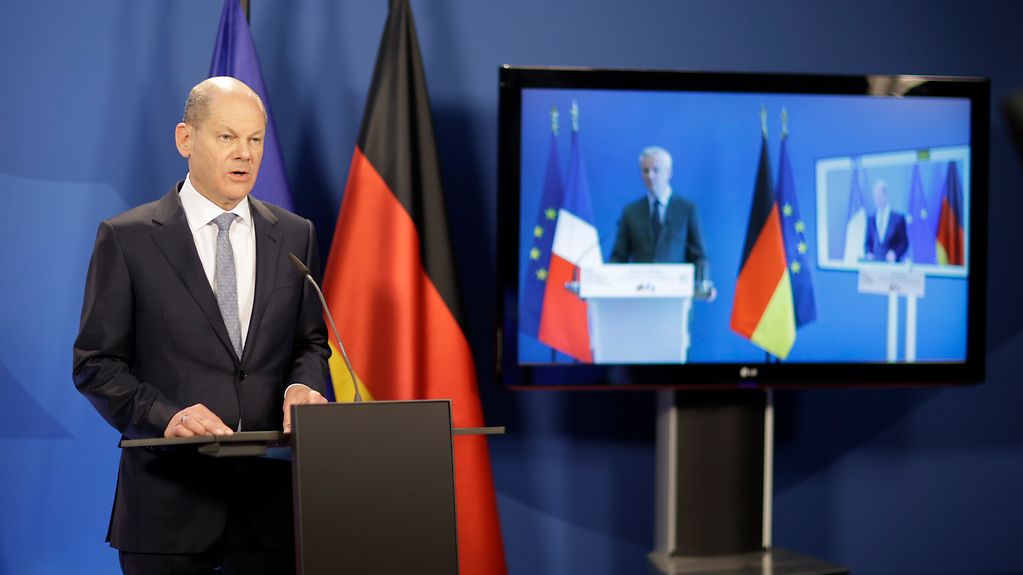Cabinet adopts Germany Recovery and Resilience Plan
“With the German Recovery Plan we are sending a clear signal for climate action and digitalisation, for growth and employment,” stressed Federal Finance Minister Olaf Scholz with a view to the Germany Recovery and Resilience Plan adopted today. The German plan provides for spending of some 28 billion euros to invest in climate action and digitalisation.
2 min reading time

At a press conference, Federal Minister of Finance Olaf Scholz presented the German Recovery Plan for the European Commission regarding Corona Recovery Assistance with his French counterpart, Bruno Le Maire.
Photo: BMF/Photothek
On Tuesday, the Cabinet adopted the German Recovery and Resilience Plan. On the basis of the draft adopted by the Cabinet on 16 December 2020, the plan was drawn up in close dialogue with the European Commission. The plan will be communicated to Brussels by 30 April 2021.
More climate action and digitalisation
“With the German Recovery Plan we are sending a clear signal for climate action and digitalisation, for growth and employment,” said Federal Finance Minister Olaf Scholz. The German Recovery and Resilience Plan contains a balanced mix of investment and reforms. These are fully in line with European requirements and are underpinned with concrete and binding targets and milestones.
90 per cent of the spending set out in the German Recovery Plan fosters climate action and the digital transformation. The German government thus exceeds the EU’s ambitious goals by a long way. All in all, total spending of about 28 billion euros is planned. The German Institute for Economic Research expects the planned measures to have a very positive impact on economic output and employment.
Unity and solidarity in the face of the pandemic
The EU leaders last year launched a fund worth 750 billion euros to address the economic consequences of the COVID-19 pandemic. The completion of the plans closes a circle that is based on a Franco-German proposal from April 2020, reported Olaf Scholz. At its heart is what is known as the Recovery and Resilience Facility. To receive funds from the Facility, member states must submit recovery and resilience plans.
“This is a good day for Europe. Germany and France are presenting their COVID recovery plans. The EU recovery fund also allows all other EU member states to take steps in order to emerge stronger from the crisis. We can now act with unity for a strong, viable Europe that acts with solidarity,” said Federal Finance Minister Olaf Scholz
A plan for recovery and the future
The German plan translates the political priorities of the Recovery and Resilience Facility for economic recovery and a viable economy and society into suitable measures.
The Recovery and Resilience Facility is to be used for public investment and to generate impetus for important investments in the future as well as reforms in order to strengthen the EU economy. For every investment and reform project, specific and verifiable milestones and targets must be set.
Key elements of Germany’s Recovery and Resilience Plan
- Climate policy and energy transformation
- Digitalisation of the economy and infrastructure
- Digitalisation of education
- Strengthening social participation
- Strengthening a pandemic-resilient health system
- Modern administration and elimination of obstacles to investment.
The COVID-19 crisis is an enormous challenge for the EU and for Germany. The Next Generation EU recovery instrument and the Recovery and Resilience Facility, which is to channel spending totalling 672.5 billion euros, have laid the foundation so that Europe can emerge stronger from the crisis.